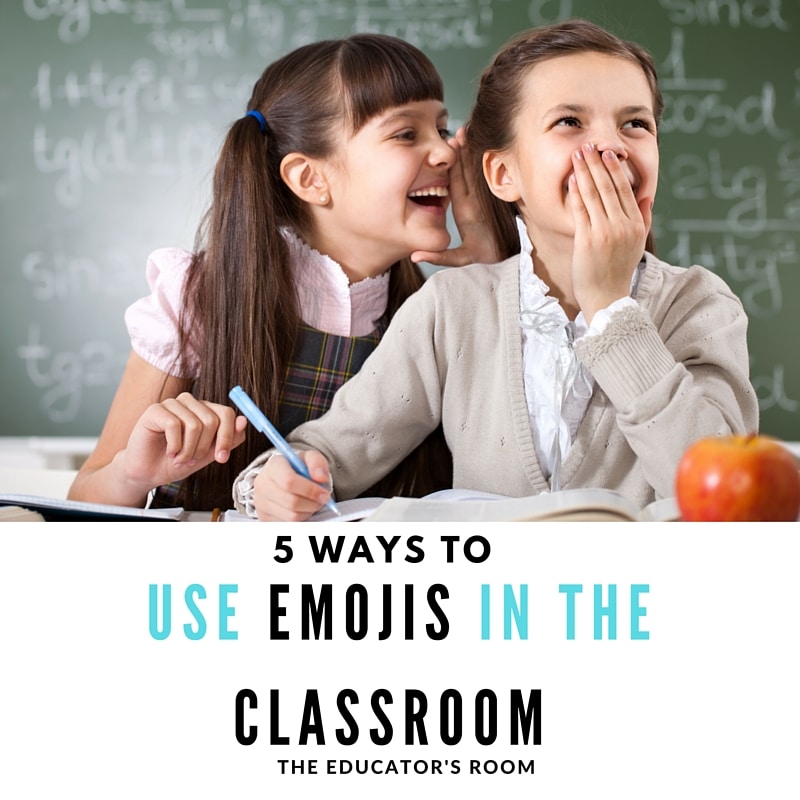I realized almost immediately that I wasn’t getting through to my Kindergartners… again. I asked a class full of 5-year-olds to identify feeling words, and I got the same generic responses – happy, sad, mad. Year after year, I struggle with how to teach my primary students, especially my English Language Learners, to use precise language to describe the emotions of the characters in the stories we read. And then I remembered how my preschool-aged daughter recently asked me to help her pick just the right emojis in a text message to her grandparents from my cell phone. How she even knew the term “emojis” is beyond me, but I realized that this may be the bridge I have been searching for. My students may not have access to books at home, but almost every single one of them has seen or used a smartphone, tablet, or iPad.
Technology is the new great equalizer.
So I went for it. I switched gears and asked if they had every used emojis – the little smiley and sad faces they see on a smartphone. This time their little faces lit up in recognition and understanding! We ended up having a lively discussion about different scenarios for each feeling word they brainstormed. And we even made an anchor chart poster depicting our own emojis for each new emotion they identified.
Here are some ways you can use emojis to spice up your instruction:
1.Emojis to identify character emotions. Go beyond happy, sad, and mad! Show your students there are a variety of different feel-good and not-so-good emotions. Ask your students to tell about a time they felt a strong emotion (My sister broke my favorite toy). If needed, help them identify the emotion with a word (frustrated, aggravated, etc.) and pick a matching emoji.
2.Emojis as behavior management. The key to a well-run classroom is effective management. One way you can track student behavior is to use emoji faces or thumbs up/down emojis. Throw out your tired, old “stoplight” behavior tracker! You can use happy, neutral, and sad faces instead. There are even enough different emojis in between to add extra steps for warnings or cheers.
3.Emojis for status-of-the-class check-ins. When you look out to a sea of little faces, it may be hard to tell who understands the lesson and who is struggling. Putting thumbs up/down or emoji faces on index cards can eliminate the uncertainty. Give each child a series of at least two cards – thumbs up/down or happy/confused face. I recommend printing the pictures on different colored backgrounds to make them easily identifiable in a crowd. As the students work, they can flip back and forth between the pictures to signal to the teacher when they need help or clarification.
4.Emojis to help children identify their own feelings. Young children or children who struggle to communicate may not have the vocabulary knowledge to pinpoint their own feelings. You can help them find their voice by showing them different emoji faces and associating a word to describe the emotion shown.
5.Emojis to help ELLs bridge communication gaps. Emojis are more than just faces! There are animals, nature, weather, holidays, clothing, food items, buildings, and more! When your ELLs are having a hard time recalling a certain word, you can use an emojis or a series of emojis to help them get across what they are trying to say.
What other ways can you use emojis in your classroom?








Leave a comment